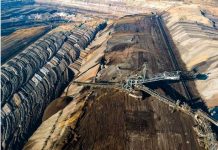Last week I described how tax pools are a near-unknown—but increasingly critical—metric for junior oil and gas investors.
Tax pools shelter cash flow. E&Ps need them in order to retain cash for expansion—or to keep the coffers fat for paying dividends to investors, the way more and more companies are planning.
In the new, dividend-focused E&P sector, tax pools will determine success or failure for many firms.
Another important side to this story is that tax pools will increasingly drive M&A activity. Companies with shrinking tax credits will be looking for acquisition targets with deep tax pools.
Who might get bought and for how much? Let’s take a look.
Attractive Losses
We looked last time at two charts to understand tax pool dynamics across the Canadian E&P sector.
The first shows tax pools plotted against cash flow for a universe of E&Ps. The further right a company plots, the larger its pools.

The second chart shows the “cover ratio.” A measure of how many years of cash flow a company’s current tax pools can shelter. A bigger ratio means a longer time without having to pay tax.

A company like Southern Pacific (TSX:STP) has a high ratio of 27.5. But that’s partly because it has low cash flow—$26.4 million annualized.
If a company like this can’t ramp up its output and cash flow, it’s left with large tax pools that will never be used.
Those pools could, however, become an asset for somebody else… like a company with good cash flows running low on its own tax pools.
Let’s do the math. If ARC Resources (TSX:ARX)—for example—acquired Southern Pacific, the company would pay around $660 million, at STP’s current market valuation plus debt.
ARC would get all of STP’s assets, plus $725 million in tax pools. Pools not currently being used to shield asset income to any great degree. Pools that could then be applied against ARC’s cash flow from its other assets.
STP’s tax pools would cover about three quarters worth of ARC’s annualized cash flow. Assuming a 22.5% tax rate, that equates to tax savings of $163 million.
Subtract that cash in ARC’s pocket from the purchase price for STP, and the effective payout for the acquisition is only $560 million. The acquirer has picked up those assets at a significant discount to market.
Banking Assets
Sure, there are hitches. Using up STP’s tax pools would leave cash flow from the acquired assets unprotected if and when they see increased production.
But ARC could equally choose to simply “bank” those assets. Collecting a majority interest in 402 sections of oil sands leases. It’s possible that an asset like this could be shelved for future consideration, and still be accretive to overall net asset value.
The acquirer could even turn around and re-sell the assets. As long as the sale price was more than 77.5% of the original purchase price, ARC makes a profit on the transaction.
This “tax-driven” M&A could particularly target companies with technology-intensive operations like oil sands—operations where big up-front costs generate large tax pools without initial commensurate cash flow.
Athabasca Oil (TSX:ATH) is another example. The company holds $1.7 billion in tax pools, but is not yet making positive cash flow.
If valuations for such companies continue to fall (STP is down nearly 50% over the last year), it may hasten acquirers to look at these firms as tax targets.
The Right Combination
Companies targeting acquisitions may also look at the potential for assets to generate new tax pools.
As we’ve discussed, there are different types of tax pools… some more high-octane than others in terms of shielding income.
The two major types are Canadian Exploration Expenses—generated by drilling on new, unproven targets—and Canadian Development Expenses, created by drilling on mature, established fields.
Exploration Expense credits provide bigger savings. They can be written off 100% against cash flow in the year they’re incurred.
Only 30% of development expenses can be used in the year of drilling. Companies have to carry over the remaining credits to future years, waiting for the tax savings.
Companies considering M&A will be looking at how acquired assets can generate tax pools… particularly high-value Exploration Expenses.
Firms like Twin Butte Energy (TSX:TBE) and Zargon Oil and Gas (TSX:ZAR) make good acquisition targets this way.
These companies hold large acreage positions in proven oil plays in central Alberta and Saskatchewan. They have a lot of land, and lots of spots to drill exploration wells looking for new pools. At relatively lower risk, given their experience in these fairways.
Such projects could work well for companies like ARC and Peyto (TSX:PEY). Companies that need additional tax pools.
By acquiring a Twin Butte or a Zargon, the larger firms get acreage where they could launch exploration drill campaigns. At a size that generates meaningful tax pools. But with an acceptable risk-reward profile.
This is a win-win. Smaller companies with large exploration grounds are going to be hard-pressed to fully explore these projects. They can’t afford to commit a lot of dollars for exploration in the current, tightening financial climate.
But bigger firms with a balanced portfolio of development and exploration projects can spend exploration dollars. Squeezing more value from their exploration bucks by using the high-powered tax pools from exploration drilling to shelter income from their mature assets.
Investors should look for smaller companies with large acreage positions in proven plays. Such projects will become increasingly valuable places for E&Ps to scale out the drilling they need to create their future tax shelters.
– Dave Forest, guest editor








